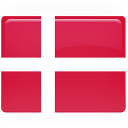Telemedicine in Denmark
Denmark’s health and care system organisation
Denmark is divided into 98 municipalities (kommuner) and five regions (regioner), each covering several municipalities. The regions are responsible for hospitals and public health insurance. The municipalities are responsible for district nursing, preventive health and rehabilitation.
For practical purposes, the Danish health care service can be divided into two sectors: primary health care and the hospital sector.
The primary health care sector deals with general health problems and its services are available to all. This sector can be divided into two parts:
• One which chiefly deals with treatment and care: such as general practitioners, practicing specialists, practicing dentists, physiotherapists (the practice sector) and district nursing;
• Another which is predominantly preventive and deals with preventive health schemes, health care, and child dental care.
When a citizen develops an illness, he or she usually first comes into contact with the primary health care sector.
The hospital sector deals with medical conditions which require more specialised treatment, equipment and intensive care.
In addition to the treatment of patients, both general practitioners and hospitals are involved in preventive treatment as well as in the training of health personnel and medical research.
In the health care service, general practitioners act as “gate-keepers” with regard to hospital treatment and treatment by specialists. This means that patients usually start by consulting their general practitioners, whose job it is to ensure that they are offered the treatment they need and that they are not be treated on a more specialised level than is necessary.
It is usually necessary to be referred by a general practitioner to a hospital for medical examination and treatment, unless it is a question of having had an accident or developing an acute illness. It is also normally necessary to be referred by a general practitioner for treatment by a specialist.
Denmark’s health and care system financing
The Danish health care system is based on a principle of free and equal access for all citizens. Thus, the vast majority of health services in Denmark are free of charge for users.
Health care in the regions is financed by four kinds of subsidies: A block grant from the state, a state activity-related subsidy, a local basic contribution, and a local activity-related contribution.
The state block grant constitutes the most significant element of financing – around 75%. In order to give the regions equal opportunities to provide health care services, the subsidy is distributed by a number of objective criteria that reflect expenditure needs (e.g., the demography and social structure of each region).
Furthermore, part of the state financing of the regions is a state activity-related subsidy. The activity pool may constitute up to 5% of the health care expenditure of the regions. The purpose of the pool is to encourage the regions to increase the activity level at their hospitals.
Following local government reform, municipalities now contribute to financing health care. This reform was implemented from 2007 onwards, and was based on a cluster of 50 new laws passed in 2005. When considering the new local health care tasks (preventive treatment, care, and rehabilitation), the municipalities have acquired a more important role in the health care system. The purpose of these local contributions is to encourage the municipalities to initiate efficient preventive measures for their citizens with regard to health issues.
Local financing consists partly of a basic contribution and partly of an activity-related contribution. Together they constitute around 20% of total financing of health care in the regions.
Under the Health Care Reimbursement Scheme, services are provided by self- employed professionals such as general practitioners, specialists, and dentists who are licenced by the state. These services are provided in accordance with collective agreements between the regions and the relevant unions. Collective agreements include the prices of individual services which are covered by the scheme.
Denmark’s telemedicine strategy and legislation
Denmark’s national health authority has a strategy for telemedicine which was launched in 2012. The action plan supports and disseminates telemedicine initiatives that improve productivity and provides a direction for the on-going modernisation of the health services. The action plan (the “Better Framework for Telemedicine“) contains three initiatives to secure better framework for telemedicine. There are five concrete dissemination activities in the plan (they are called “Paths to Dissemination”):
Better Framework for Telemedicine
• Reference architectures and standards.
• Joint concepts for assessment.
• Overview of telemedicine technologies and solutions in use.
Paths to Dissemination
• Clinically integrated home monitoring.
• Home monitoring for COPD patients.
• Telepsychiatry.
• Internet psychiatry.
• National telemedical assessment of ulcers.
The regional authority’s strategy for telemedicine was also launched in 2012 in common with the Regional eHealth Organisation (called RSI).
The national authority has a strategy in other health-related or IT domains that include telemedicine. Launched in 2008, it is called Health IT. A reviewed national eHealth strategy has been launched in 2013.
Denmark does not have legislation that deals with telemedicine specifically. The respondent did not know if there is legislation that in any way hinders or obstructs the implementation of telemedicine services.




